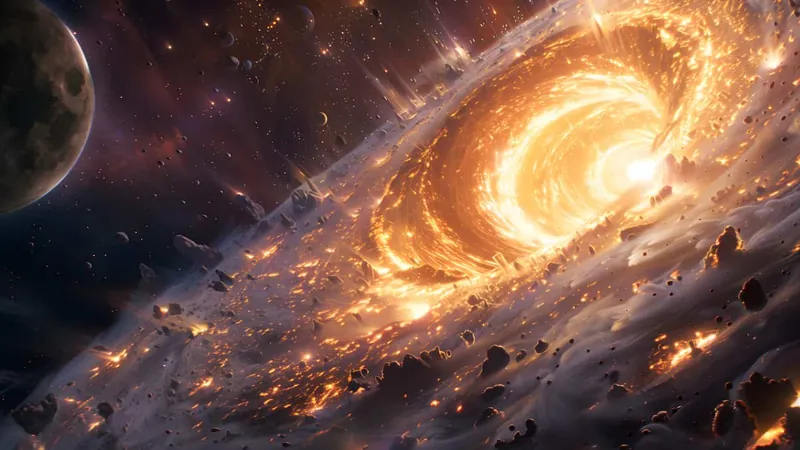
Astronomers Uncover the Most Ravenous Supermassive Black Hole from the Early Universe!
2024-11-07
Author: Charlotte
Astronomers Make a Groundbreaking Discovery
Astronomers have made an astonishing discovery, identifying the hungriest supermassive black hole in the early universe, thanks to advanced observations from NASA's Chandra X-ray Observatory and the revolutionary James Webb Space Telescope (JWST). This remarkable black hole, known as LID-568, has displayed an insatiable appetite, consuming an incredible seven million solar masses in a mere 12 million years, exceeding previously established growth rate limits.
Implications of LID-568's Discovery
The existence of such a voracious black hole poses significant questions regarding how black holes managed to achieve colossal sizes so rapidly during the cosmos’s infancy. “This black hole is having a feast,” remarks Julia Scharwächter, a co-author of the study from the International Gemini Observatory. This discovery sheds light on the rapid formation and growth of supermassive black holes that we observe in the early universe.
Collaborative Observations
The collaborative efforts of the Hubble Space Telescope and JWST have unveiled galaxies containing black holes whose masses vary from hundreds of millions to billions of solar masses, pushing the boundaries of our understanding of cosmic evolution.
The Location and Mechanism of LID-568
LID-568 was identified as existing a mere 1.5 billion years after the Big Bang. Observations revealed that this cosmic giant was in the midst of an unprecedented feeding frenzy, emphasizing a likely fast-feeding mechanism that pushes it beyond the Eddington limit—a theoretical threshold for maximum luminosity a star can achieve when in hydrostatic equilibrium.
Challenges in Observing LID-568
Emanuele Farina, another co-author and astronomer at the International Gemini Observatory, expressed the difficulty in pinpointing LID-568’s exact location through X-ray emissions alone. “Owing to its faint nature, the detection of LID-568 would be impossible without JWST. The use of the integral field spectrograph was essential for our observations,” Farina explained.
Future Implications and Further Research
These findings not only challenge existing theories about black hole formation but could also revolutionize our understanding of the universe's growth and complexity. As astronomers continue to explore celestial phenomena, further insights into supermassive black holes and their formations might soon emerge, shaking up the very foundations of astrophysics.
Conclusion
Stay tuned as researchers delve deeper into the mysteries of the universe—who knows what else awaits discovery in the vast cosmic ocean!









 Brasil (PT)
Brasil (PT)
 Canada (EN)
Canada (EN)
 Chile (ES)
Chile (ES)
 España (ES)
España (ES)
 France (FR)
France (FR)
 Hong Kong (EN)
Hong Kong (EN)
 Italia (IT)
Italia (IT)
 日本 (JA)
日本 (JA)
 Magyarország (HU)
Magyarország (HU)
 Norge (NO)
Norge (NO)
 Polska (PL)
Polska (PL)
 Schweiz (DE)
Schweiz (DE)
 Singapore (EN)
Singapore (EN)
 Sverige (SV)
Sverige (SV)
 Suomi (FI)
Suomi (FI)
 Türkiye (TR)
Türkiye (TR)